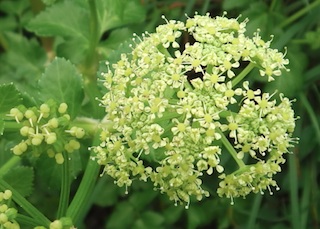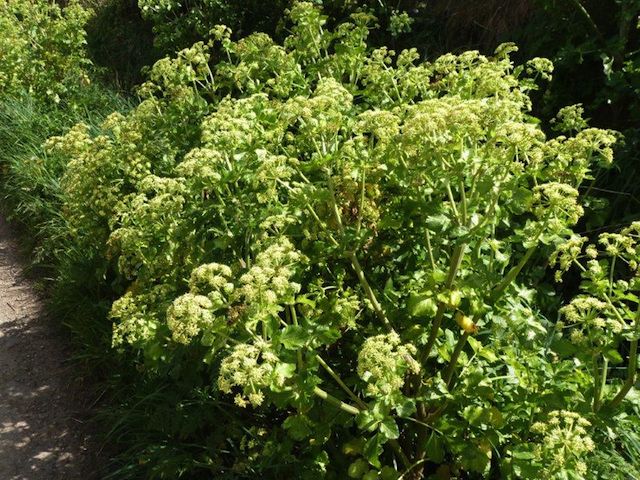 Alexanders are among the first umbellifers to grace the verges and hedges of the Lizard in spring. The soft greeny-yellow of their umbels contrasts with the rich yellow of the gorse, proving that plants don’t have to be rare to be beautiful.
Alexanders are among the first umbellifers to grace the verges and hedges of the Lizard in spring. The soft greeny-yellow of their umbels contrasts with the rich yellow of the gorse, proving that plants don’t have to be rare to be beautiful.
Photo: Ray Surridge
Latin name: Smyrnium olustratum
Cornish name: Keggas
Other names: Horse parsley, Black Lovage
The name ‘Alexanders’ is derived from its Mediterranean origin – it is the ‘parsley of Alexandria’ (Mabey, 1997). Fully naturalised in Britain, it is one of the earliest members of the carrot family – the Umbellifers, which also include the more well-known Cow Parsley – to flower, appearing from April to June near to the coast. On the Lizard, it appears in huge rich swathes along verges and hedgerows, reaching up to 150 cm in height.

It is one of the plants that the national charity, Plantlife, monitor in their Wildflowers Count.
Did you know…?
…it is likely that the Romans first brought Alexanders to Britain as a vegetable and medicinal herb. It was cultivated as a vegetable until the eighteenth century, but is now largely replaced by celery (N.B. Don’t try eating any of the umbellifer family yourself unless you are sure of the identification – some are poisonous, though several are fine to eat).
…horses know their edible umbellifers – they love to eat Alexanders!
More information and references:
Mabey, R., 1997. Flora Britannica. Chatto & Windus, London.
Rose, F. and O’Reilly, C., 2006. The Wild Flower Key, 2nd edition. Frederick Warne, London.
Published: May 2013 (updated January 2020)
Author: Amanda Scott
Photos: Ray Surridge
